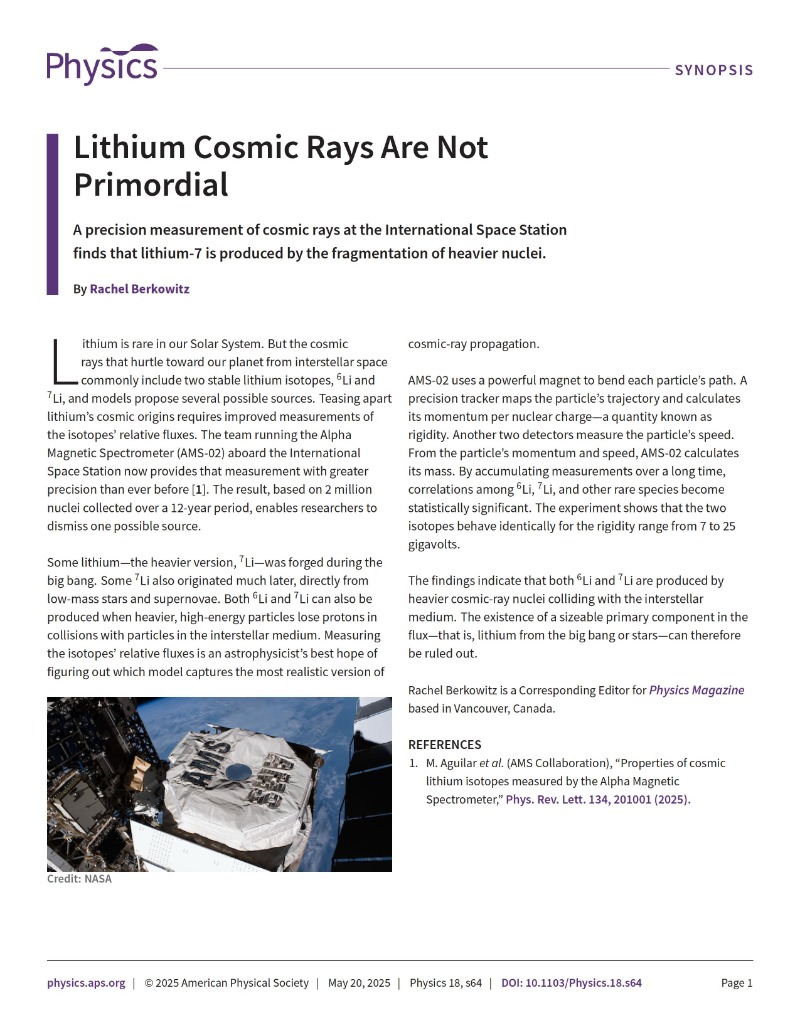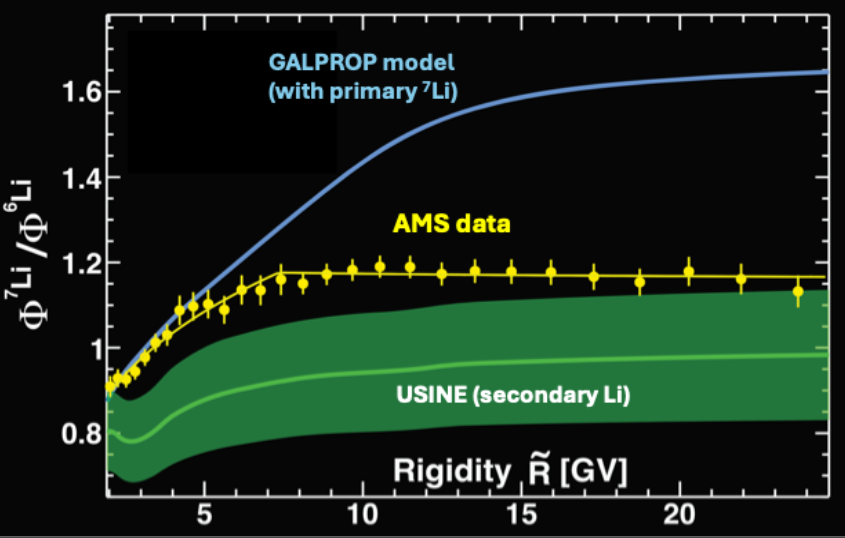SDIAT Team’s Another Breakthrough in the Study of Cosmic Rays
Lithium nuclei are among the rarest in the Solar System, yet they are relatively common in cosmic rays. They consist of two stable isotopes, 6Li and 7Li. Both are thought to be produced by collisions of heavier cosmic-ray nuclei with the interstellar medium; therefore, they are called secondary cosmic rays. In addition, 7Li may also contain a primordial component, produced at the time of the Big Bang, and a primary component, produced from 7Be decay by electron capture at astrophysical sources, such as low-mass stars or novae. Therefore, measuring lithium isotopes in cosmic rays has an important impact on understanding the formation of the Universe and its chemical evolution. However, due to the lack of precision experimental data, the origin of 7Li has not been fully understood.

Alpha Magnetic Spectrometer (AMS) is a large-scale international collaborative experiment led by Nobel Laureate Professor Samuel C.C. Ting. Since it’s been installed on International Space Station, AMS has been operating since 2011 and has collected vast amounts of accurate cosmic ray data. Recently, the AMS team analyzed lithium isotopes in cosmic rays, presenting precision measurements of the 6Li and 7Li fluxes in the rigidity range from 1.9 to 25 GV, based on 970,000 6Li and 1,040,000 7 Li nuclei collected by AMS. This represents the most extensive energy range and highest precision measurement of lithium isotopes in cosmic rays to date, providing new experimental evidence for elucidating the origin of lithium. It shows that both 6Li and 7Li are produced by collisions of heavier cosmic-ray nuclei with the interstellar medium and excludes the existence of a sizable primary component in the 7Li flux. This work is an important advancement in the study of cosmic rays in recent years.

The research was conducted collaboratively by Shandong Institute of Advanced Technology (SDIAT), Massachusetts Institute of Technology (MIT), and the University of Geneva (UNIGE). SDIAT researchers including Professor Weiwei Xu, Dr. Yao Chen, Dr. Jiahui Wei, and Ph.D Candidate Jinhua Li has made significant contributions to this study. The paper was recently published in the prestigious physics journal Physical Review Letters (PRL) (https://doi.org/10.1103/PhysRevLett.134.201001) and received an "Editors' Suggestion" from PRL. The renowned science magazine Physics also featured this research as a highlight article (https://physics.aps.org/articles/v18/s64). Figure: The new data from AMS (yellow) excluded the existence of a sizable primary 7Li component in cosmic rays. The high precision of AMS data challenges the current model of secondary Lithium (green).
Figure: The new data from AMS (yellow) excluded the existence of a sizable primary 7Li component in cosmic rays. The high precision of AMS data challenges the current model of secondary Lithium (green).




